Related Research Articles
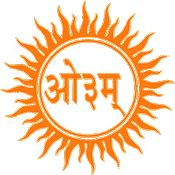
Arya Samaj is considered a monotheistic Indian Hindu reform movement that promotes values and practices based on the belief in the infallible authority of the Vedas. The samaj was founded by the sannyasi (ascetic) Dayanand Saraswati in the 1870s.
Shuddhi is Sanskrit for purification. It is a term used to describe a Hindu religious movement aimed at the religious conversion of non-Hindus of Indian origin to Hinduism.
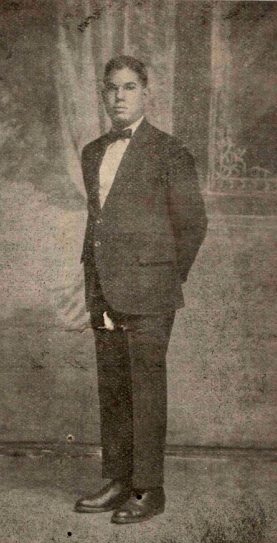
Pt. Vishnu Deo OBE was the first Fiji born and bred leader of the Indo-Fijians. From his initial election to the Legislative Council in 1929 to his retirement in 1959, he remained the most powerful Indo-Fijians political leader in Fiji. He was a staunch supporter of Arya Samaj in Fiji and also the editor of the first successful Hindi-language newspaper to be published in Fiji.
Parmanand Singh was one of the three Indo-Fijians elected to the Legislative Council of Fiji in October 1929 when Indo-Fijians were given the first opportunity to elect their own representatives. The other two were Vishnu Deo and James Ramchandar Rao. Singh was a landlord from Ba and undertook several business ventures which included publishing newspapers.
Kunwar Bachint Singh was an Indo-Fijian teacher and politician. He arrived in Fiji in 1927 as a teacher for the Arya Samaj but his association with Vishnu Deo led him to play an active role in aggressively promoting the Arya Samaj and finally into politics. He was elected into the Legislative Council as a protégé of Vishnu Deo but after the election took an independent stance opposed to the wishes of the majority of the Indo-Fijians. He supported nominated rather than elected representation, actively supported the war effort and even attempted to set up a farmers union opposed to a number of existing unions. The Government rewarded him for his loyalty by nominating him into the Legislative Council three times, appointing him as a Justice of the Peace and as the first Indo-Fijian member of the Executive Council.

The Arya Samaj was the first religious, cultural and educational Fiji Indian organisation established in Fiji. From its inception, in 1904, it attracted the young, educated and progressive Hindus into its fold. During the first three decades of the twentieth century, it was the sole voice of the Indian community in Fiji and as Fiji Indians won political rights, it was not surprising that first Indian members of the Legislative Council were all Arya Samajis. The influence of Arya Samaj over the Indians in Fiji gradually waned as other organisations representing Indians were established but it remained the dominant force in politics until 1959. The modern day Arya Samaj in Fiji still speaks out on issues affecting its members and its activities are visible through the numerous educational institutions that it manages.
Pandit Shri Krishna Sharma was an Arya Samaj preacher who came to Fiji in 1926 from Rajkot, India. He was a gifted public speaker and singer of religious songs. He provided impetus to the Arya Samaj movement in Fiji. Under his influence Arya Samaj schools and temples were established in Fiji. He was responsible for the establishment of the Hindu Maha Sabha for the purpose of uniting all Hindus in Fiji. He advocated shuddhi and this caused conflict with Muslims and Christians in Fiji.

Pandit Ami Chandra Vidyalankar was an Indo-Fijian educator, preacher, labour leader, politician and football administrator. He served as a member of the Legislative Council between 1947 and 1953.
Fiji Samachar was a Hindi language newspaper published in Fiji from 1924 to 1974. It was published in Suva by the Indian Printing and Publishing Company and its first editor was Babu Ram Singh.
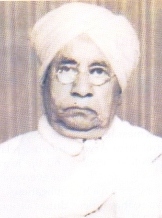
Thakur Kundan Pal Singh Kush (1881–1967) was an Arya Samaj missionary and teacher who arrived in Fiji, from Muzaffarnagar, Uttar Pradesh, India in 1928. He first taught at the Dharamshala School in Nausori where he later became the founding Head Teacher of Vunimono Arya School in 1929. He taught in a number of Arya Samaj schools which included Gurukul Primary School near Lautoka in 1939, Arya Samaj Girls' School in Saweni, Lautoka, from 1940 to 1945, Swami Shraddanand Memorial School in Suva, Vunikavikaloa Arya School in Ra, and Veisari Primary School near Suva.
Babu Ram Singh was a Fiji Indian who had come to Fiji under the indenture system and was one of the few people who, after indenture, prospered and made an attempt to help his less fortunate ex-indentured brethren. Babu Ram Singhs surviving Business, Fiji Rubber Stamp Co Ltd is still under operation in Mark Street, Suva, and is looked after by his children.

Suriname has possibly the highest proportion of Hindus who are Arya Samajis, compared to any other country. In Suriname, the Hindu population had split, with roughly 20% following the teachings of Swami Dayanand Saraswati, founder of the Ārya Samāj, and 80% following the Sanatan Dharm. According to the census of 2012 the number of Ārya Samājĩs is 16,661. The arrival of Arya Samaj preachers in Suriname, in 1929, caused a rift in the Hindu community, between the followers of Sanātanī and the Ārya Samāj.
Mirza Salim Buksh was an Indo-Fijian community leader. One of the first Indo-Fijians to gain a formal education, he was chosen as one of the representatives of the Indian community on a number of occasions. He helped form and supported a number of social and religious organisations. He also served one term as a nominated member in the Legislative Council.
Gurkul Primary School was the first substantive school for Fiji Indians established in Fiji in 1918. Its establishment, coincided with the formation of the Arya Pratinidhi Sabha of Fiji, the Arya Samaj organisation that manages the school. The school is located at Saweni near Lautoka in the western side of the island of Viti Levu.
This is a synopsis of organisations formed by Indians in Fiji. When they became free from the bondage of indenture and were able to organise themselves, they founded numerous organizations to seek social and political justice. These organisations promoted the teaching of Indian languages and religious practices and also to help others in time of need. Some of the successful organisations are listed below in the order in which they were established. Some, such as the National Federation Party, are no longer exclusively Indian, but are still predominantly so.
The Indian Association of Fiji is the name used by organisations established in Fiji seeking to unite different groups within the Fiji Indian community to facilitate the plight of Indians in Fiji.
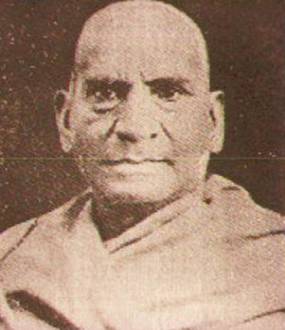
Swami Shraddhanand, also known as Mahatma Munshi Ram Vij, was an Arya Samaj sannyasi and an Indian Independence activist who propagated the teachings of Dayananda Saraswati. This included the establishment of educational institutions, like the Gurukul Kangri University, and played a key role on the Sangathan and the Shuddhi (purification), a Hindu reform movement in the 1920s.
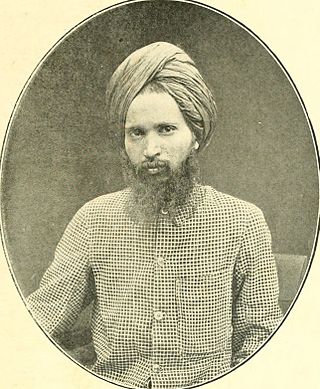
Lala Hansraj also known as Mahatama Hansraj, was an Indian educationist and a follower of Arya Samaj movement founder, Swami Dayanand. He founded, with Gurudatta Vidhyarthi, the Dayanand Anglo-Vedic Schools System (D.A.V.) in Lahore on 1 June 1886, where the first D.A.V. school was set up in memory of Dayanand who had died three years earlier.
Sanātanī is a term used to describe Hindu duties that incorporate teachings from the Vedas, Upanishads, Puranas, and other Hindu religious texts and scriptures such as the Ramayana and its many versions, as well as the Mahabharata, which itself is often described as a concise guide to Hindu philosophy and a practical, self-contained guide to life. The word Sanātanī is coined from Sanātana Dharma which refers to the idea that its origins lie beyond human history, as revealed in the Hindu texts.
References
- ↑ Ali, Ahmed (1977). The Fiji Indians: Challenge to European dominance 1920-1946. Suva, Fiji: University of the South Pacific. p. 119.
- ↑ Kelly, John (1991). A politics of virtue : Hinduism, sexuality, and countercolonial discourse in Fiji . Chicago: University of Chicago Press. pp. 202. ISBN 0-226-43030-8.
- ↑ Gillion, Kenneth (1977). The Fiji Indians: Challenge to European dominance 1920-1946. Canberra, Australia: Australian National University Press. p. 141. ISBN 0-7081-1291-9.
- ↑ Gillion, Kenneth (1977). The Fiji Indians: Challenge to European dominance 1920-1946. Canberra, Australia: Australian National University Press. p. 110. ISBN 0-7081-1291-9.